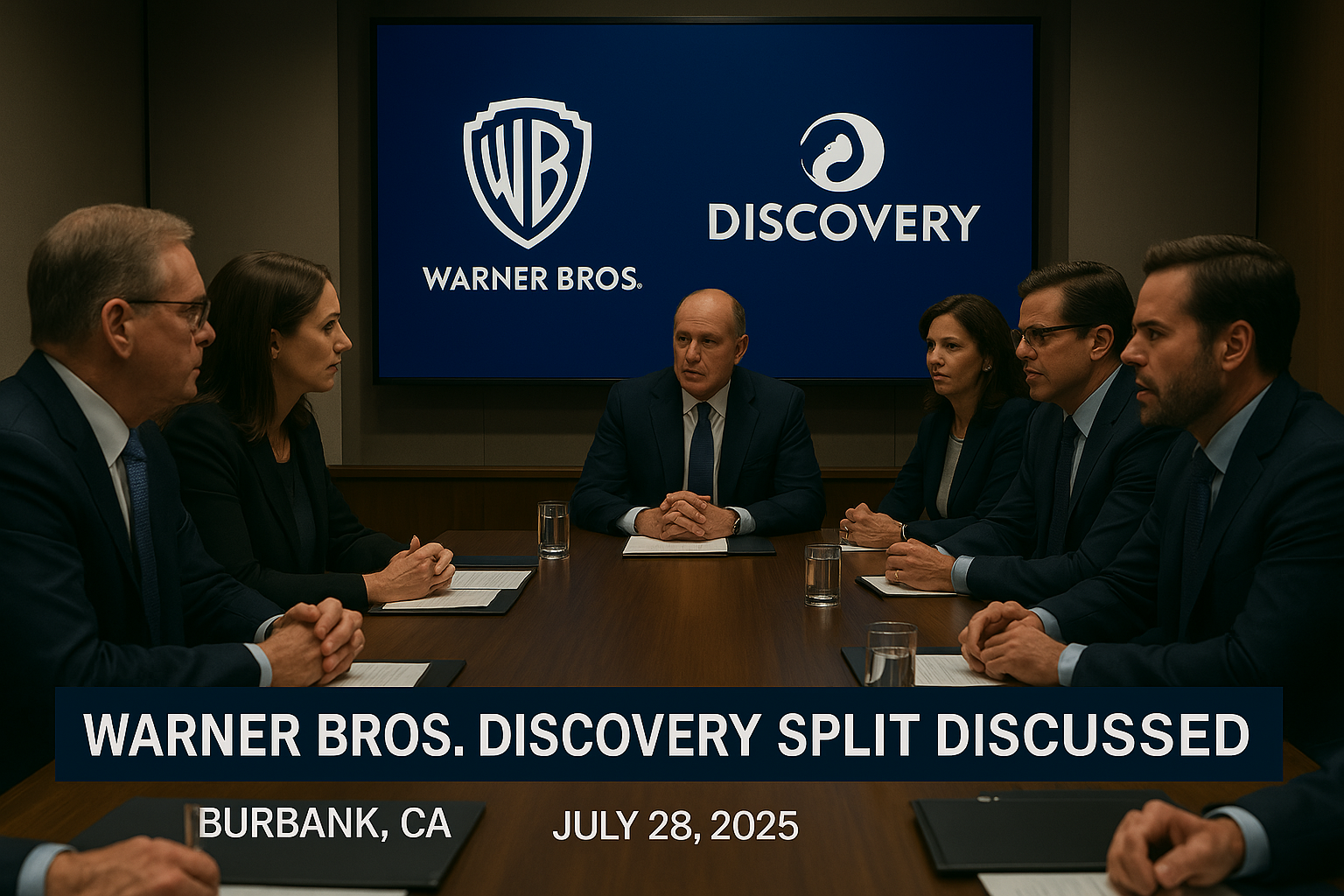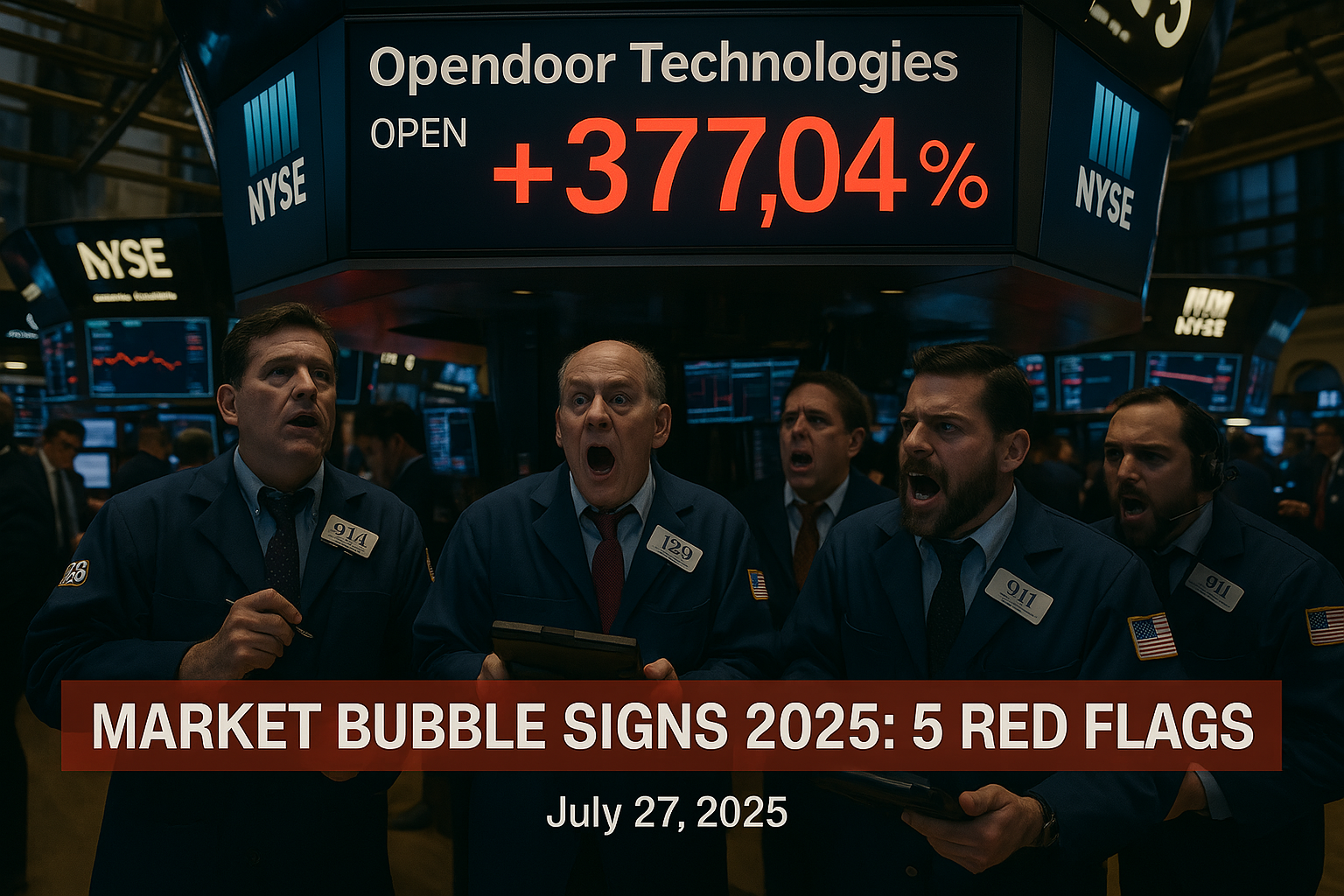Warner Bros. Discovery Split 2025: Warner Bros. and Discovery Global Emerge

In a seismic shift for the entertainment industry, Warner Bros. Discovery (WBD) announced on July 28, 2025, that it will split into two publicly traded companies by mid-2026: Warner Bros., focusing on premium studios and streaming, and Discovery Global, housing cable networks and digital platforms. As reported by the Los Angeles Times, this move unravels the 2022 merger of WarnerMedia and Discovery, a $43 billion deal that struggled under $34 billion in debt and a declining cable TV market. With CEO David Zaslav leading Warner Bros. and CFO Gunnar Wiedenfels heading Discovery Global, the Warner Bros. Discovery split 2025 aims to unlock value by separating high-growth streaming from cash-generating but fading linear networks. What does this mean for investors, employees, and the media landscape? This article delves into the strategy, leadership, financial implications, and actionable insights for stakeholders.
Details of the Corporate Split
Announced on June 9, 2025, and detailed on July 28, WBD’s tax-free split, expected to close by mid-2026, responds to the rapid decline of traditional pay-TV, with 15% of U.S. households cutting the cord in 2024, per eMarketer. The restructuring, advised by J.P. Morgan, Evercore, and Kirkland & Ellis, divides WBD’s assets as follows:
- Warner Bros. (Streaming & Studios):
- Assets: Warner Bros. Motion Picture Group, Warner Bros. Television Group, DC Studios, HBO, HBO Max (rebranded from Max in 2023), Warner Bros. Games, and studio facilities in Burbank and Leavesden, UK, plus iconic film and TV libraries (e.g., Harry Potter, The Sopranos).
- Focus: Scaling HBO Max, now in 77 markets with 122 million subscribers as of March 2025, targeting 150 million by 2026, per WBD’s investor call. The division aims for $3 billion in annual adjusted EBITDA, driven by premium content like The Last of Us and Dune: Prophecy.
- Leadership: Led by CEO David Zaslav, with key executives including Casey Bloys (Chairman/CEO, HBO and HBO Max), Pam Abdy and Mike De Luca (Co-Chairs/CEOs, Motion Picture Group), James Gunn and Peter Safran (Co-Chairmen/CEOs, DC Studios), Channing Dungey (Chairman/CEO, TV Group), JB Perrette (CEO, Streaming and Games), Bruce Campbell (COO), and Robert Gibbs (Chief Communications Officer). Searches are underway for a CFO and Chief People Officer, per Variety.
- Discovery Global (Global Networks):
- Assets: CNN, TNT Sports (U.S.), Discovery, HGTV, Food Network, TBS, Cartoon Network, free-to-air channels in Europe, Discovery+ (profitable with 30 million subscribers), and Bleacher Report, reaching 1.1 billion viewers in 200 countries, per WBD’s release.
- Focus: Leveraging high-margin linear networks (40% operating margins, per WBD) and digital platforms like Discovery+ to maintain cash flow, with investments in international sports (Eurosport) and CNN’s streaming initiatives.
- Leadership: Led by Gunnar Wiedenfels (CEO), with executives including Mark Thompson (Chairman/CEO, CNN), Luis Silberwasser (Chairman/CEO, TNT Sports), Gerhard Zeiler (President, International), Ryan Gould (President, U.S. Ad Sales), Anil Jhingan (Chief Development Officer), and Fraser Woodford (CFO). A Chief Communications Officer search is ongoing, per Hollywood Reporter.
The split unwinds the 2022 WarnerMedia-Discovery merger, which combined HBO, Warner Bros., and Turner networks with Discovery’s cable portfolio. The merger, initially championed by Zaslav to create a diversified media giant, left WBD with $50 billion in debt, now reduced to $34 billion after repaying $19 billion, per Wiedenfels’ July 2025 remarks. Most debt will transfer to Discovery Global, reflecting its cash flow stability, while Warner Bros. carries a smaller but significant portion, per CNBC.
Strategic Rationale
The split addresses structural and market challenges:
- Streaming Growth vs. Cable Decline: HBO Max’s 122 million subscribers and 20% revenue growth in Q1 2025 contrast with a 12% annual decline in U.S. cable subscriptions, per S&P Global. Separating streaming allows Warner Bros. to compete with Netflix (300 million subscribers) and Disney+ (181 million combined with Hulu), per Reuters.
- Debt Management: S&P Global’s 2025 downgrade to junk status cited linear TV’s revenue declines, pushing WBD to isolate its profitable streaming and studio assets, per CNBC. Discovery Global’s cash flow (70% free cash flow conversion, per WBD) will service most of the $34 billion debt.
- Investor Appeal: The split offers shareholders a choice: growth-oriented Warner Bros. or stable, cash-generating Discovery Global, mirroring Comcast’s Versant spinoff, per New York Times. WBD shares rose 2% on June 9, 2025, but fell 3% by close, reflecting mixed investor sentiment, per Variety.
- M&A Potential: Discovery Global, with its cable assets, is positioned for mergers or private equity acquisition, per Deadline. Analysts like AJ Bell’s Dan Coatsworth note WBD’s “hotchpotch” structure failed to win markets, making the split a strategic pivot.
The move follows a December 2024 reorganization that grouped WBD into Streaming & Studios and Global Networks, signaling the split, per Wikipedia. Industry trends, including Lionsgate’s Starz spinoff and Paramount’s Skydance merger talks, underscore a shift away from conglomerate models, per Reuters.
Financial and Operational Impacts
- Warner Bros.:
- Revenue Potential: HBO Max’s premium focus, with hits like White Lotus and The Pitt, drives subscriber growth, targeting $15 billion in annual revenue by 2027, per WBD’s investor guidance. The studio aims to produce 10–12 films annually, up from 8 in 2024, per Screen Daily.
- Challenges: High content costs ($18 billion in 2024) and competition from Netflix and Disney require disciplined spending. Zaslav’s $51.9 million 2024 compensation, opposed by 59% of shareholders, signals governance scrutiny, per Los Angeles Times.
- Discovery Global:
- Revenue Stability: Linear networks generate $10 billion annually, with 40% margins, per WBD. Discovery+ adds $1 billion, with growth potential in Europe and Latin America, per Variety.
- Challenges: Losing NBA rights to Disney, NBC, and Amazon starting 2025–26, per Wikipedia, and a $9.1 billion write-down in 2024 highlight linear TV’s decline, per CNBC.
- Debt Allocation: Discovery Global inherits most of the $34 billion debt, leveraging its cash flow, while Warner Bros. carries a smaller portion to support streaming investments, per Wiedenfels’ comments.
Stakeholder Strategies
For investors, employees, and media professionals, the split offers opportunities and risks:
- Investors:
- Strategy: Favor Warner Bros. for growth exposure, with HBO Max’s subscriber trajectory and DC Studios’ reboot under Gunn and Safran (e.g., Superman in 2026). Hedge with Discovery Global for dividend potential, given its 70% free cash flow conversion, per U.S. Bank’s media outlook. Action: Allocate 60% to Warner Bros. for long-term gains, 40% to Discovery Global for stability.
- Risk: Monitor Warner Bros.’ content costs and Discovery Global’s cable erosion. Use stop-loss orders at 10% below current WBD share prices ($8.50 as of July 2025), per Bloomberg Terminal.
- Employees:
- Strategy: Warner Bros. employees should upskill in streaming analytics and digital content creation, as HBO Max targets 150 million subscribers. Discovery Global staff can focus on ad sales and international expansion, leveraging CNN and Eurosport. Action: Enroll in Coursera’s digital media courses or attend IBC 2026 for industry trends.
- Risk: Layoffs, like CNN’s 100 cuts in July 2024, may persist, per Wikipedia. Prepare for role transitions with cross-training in digital platforms.
- Media Companies:
- Strategy: Competitors like Netflix should accelerate premium content investment to counter Warner Bros.’ HBO Max push. Cable-focused firms can partner with Discovery Global for sports or news distribution, per Hollywood Reporter. Action: Explore co-production deals with Warner Bros. or ad bundles with Discovery Global.
- Risk: Regulatory hurdles, like Trump’s scrutiny of media mergers, could delay M&A, per Reuters.
Broader Implications
- Industry Shifts: The split reflects a broader unraveling of media conglomerates, with Comcast’s Versant and Lionsgate’s Starz spinoffs signaling a return to focused entities, per Reuters.
- Consumer Impact: Viewers benefit from HBO Max’s premium focus but may face fragmented sports access, with TNT Sports split between U.S. (Discovery Global) and UK/Ireland (Warner Bros.), per Wikipedia.
- M&A Landscape: Discovery Global’s cable assets, valued at $15–20 billion, are ripe for private equity or mergers with firms like Paramount, per Deadline.
- Regulatory Risks: Trump’s media scrutiny, including his lawsuit against CBS, may complicate approvals, per Reuters.
Challenges Ahead
- Execution Risk: Completing the split by mid-2026 requires IRS tax rulings and board approval, with market volatility a concern, per WBD’s release.
- Debt Burden: Discovery Global’s $25–28 billion debt load, per Wiedenfels, could limit international investments, per CNBC.
- Leadership Transitions: Warner Bros.’ CFO and HR searches, and Discovery Global’s communications hire, must avoid disruptions, per Variety.
- Market Sentiment: Shareholder discontent, with 59% opposing Zaslav’s pay, and S&P’s junk rating signal investor skepticism, per Los Angeles Times.
Conclusion
The Warner Bros. Discovery split 2025 into Warner Bros. and Discovery Global is a bold pivot to unlock value in a streaming-driven era, separating HBO Max’s growth potential from cable’s steady cash flow. Led by David Zaslav and Gunnar Wiedenfels, the companies aim to sharpen focus, reduce debt, and attract investors. As the media landscape fractures, stakeholders must navigate opportunities in streaming and risks in linear TV’s decline. Will this split restore WBD’s iconic brands to glory? Share your insights below and stay tuned for updates on this transformative move.











